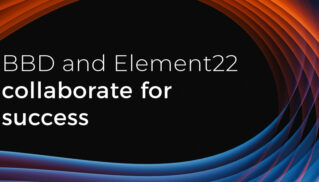
The developer’s view.
As co-organiser of the Jozi Amazon Web Services (AWS) user group and avid cloud advocate, Rory Preddy has a keen interest in AWS and surrounding technologies. Couple this with his status as a technology specialist in the BBD research and development team, and you have someone uniquely positioned to talk about the Amazon Echo Dot.
“I want her.” Needless to say, he is a fan.
The second-generation Amazon Echo Dot is a petite and powerful voice-controlled consumer device, with an intelligent personal assistant service known as Alexa. You can use Alexa to play music, entertain the kids with interactive games, read your books aloud and even control your smart home appliances.
For Preddy, the most immediate stand out with Alexa was the microphone. “I would use her because of the seven-microphone array, it’s incredibly sensitive and smart. Alexa triangulates the room and works out where your voice is coming from. With that information, she can then ignore any interference.”
As South Africans, we’re used to voice technologies not recognising our accents, but the Amazon Echo Dot had no problem understanding any of the curveballs I threw at it. This accuracy of the technology is what helps create a better overall user experience. Preddy reasons that “Amazon clearly spent lots of money getting this right and it was worth every cent”.
Unlike Cortana, Siri and Google’s Home Assistant, Alexa allows you to develop any skill you’d like and this makes it “really awesome” from a developer’s point of view. Skills are essentially voice-activated apps that you enable on your Alexa account. There are currently over 20 000 available skills and more being developed and released every week. This enables developers to customise their Alexa and bring life to coding in the cloud.
It wasn’t all plain sailing for Preddy though. The Amazon Echo Dot is currently only sold in the USA, UK and Germany – with a beta version being tested in India and Japan. Due to this, the app that runs your Amazon Echo Dot is only available in those countries. Not being able to change the location from the United States made this a bit more challenging. Furthermore, to develop skills you need to use three accounts: an AWS account, an Amazon account and an Amazon developer’s account. Some of these issues will be negated when the Amazon Echo Dot and app are sold in South Africa.
The Amazon Echo Dot is technically an IoT Edge device and has a small central processor. This means it can do basic operations itself and only has to connect home when necessary. This decentralised computing infrastructure means that data, computing and skills are distributed in the most logical place between the data source and the cloud.
Slowly but surely, Preddy believes that services which integrate into Edge devices are part of the future where, for example, you will be able to easily transact and communicate with your banking app using only your voice.
Preddy summarises the Echo Dot as “an intuitive and insightful edge gadget, with a boatload of power and capabilities that supports an attractive and adaptable tool”.



